Natural Solutions to Things That Bug You (65 page)
Read Natural Solutions to Things That Bug You Online
Authors: Myles Bader

Only 50 species of wasp out of about 2,500 species will sting you
Yellow jackets are wasps that are very aggressive and feed on sweets and meats. Their nests, usually only lasts for 1 year then the queen flies away to start another nest and the workers die off. A nest that is left over will not be used again.
REMOVING A STINGER
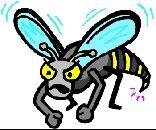 When you get stung by a bee, yellow jacket or wasp be sure that you do not pull the stinger out. When you try and remove it you may cause more venom to enter the body by squeezing it. The best method of removal is to use a credit card and scrape it off at an angle until it is dislodged. This will stop the poison from entering the skin.
When you get stung by a bee, yellow jacket or wasp be sure that you do not pull the stinger out. When you try and remove it you may cause more venom to enter the body by squeezing it. The best method of removal is to use a credit card and scrape it off at an angle until it is dislodged. This will stop the poison from entering the skin.
HAIRSPRAY TO THE RESCUE
Hairspray will give you some temporary relief if you have bees or wasps hovering around your lawn eating area.
Just spray them with hairspray and it will coat their wings so that they can’t fly. However, eventually it will wear off and you do not want to be around when it does.
LEAVE THE VIBRATOR IN THE HOUSE
Wasps and yellow jackets are very sensitive to vibrations such as running, yelling or any other fast movement anywhere in the vicinity of their nest. They will investigate and take action if they feel threatened.
ZIG-ZAG PATTERN
If bees are chasing you it is best to run in a zig-zag pattern to confuse them. This may save you from getting stung too many times.
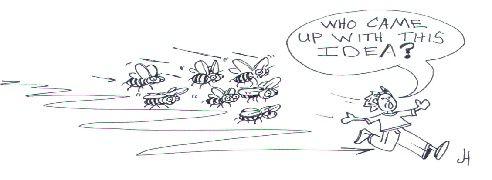
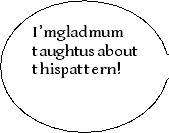
WASPY FACTS
Wasps will be attracted to protein foods and they love being a guest at barbecues
A dish of pet food outside will attract them.
Wasps imprint foods and even when they are removed they will return to that same area.
In late summer and early fall wasps like sweets and are more aggressive.
If you step on a wasp and kill it they release a pheromone, which attracts other wasps.
Rotting fruit will attract wasps.
Bright clothing attracts wasps.
Perfumes should not be worn if wasps are present in the area.
Wasps are attracted by yellow light.
Remove nests at night only. Place a cloth over the entire nest and seal it.
Burning a nest will make them very mad at you.
DON’T USE A BRIGHT LIGHT
If you decide to eliminate the wasp or yellow jackets nest at night when they are dormant, be sure that you do not use a flashlight or cast a shadow on the nest. Best to place some red cellophane paper over the lens since red light does not bother them.
PUT THEM IN A FISHBOWL
If you locate a nest on the ground, try covering it with a large glass bowl and allow it to remain for 2 weeks to kill off the nest.
ICE THEM
Placing dry ice around a ground nest will eliminate the nest by putting carbon dioxide gas into the nest. The CO
is heavier than air and will enter a nest that is partially underground.


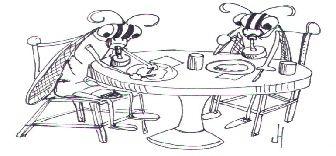
INSULATE THEIR NEST
If you inject aerosol foam insulation into their nest at night (using a red light) this will eliminate the nest. This method is frequently used in tree cavities or logs.
BAIT THEM
Sweet attractive bait can be prepared by using a 5% food-grade DE or sodium borate (borax) and honey or jelly. Form small balls and leave it in areas that they frequent.
Make sure it is not near any pets or children since it is not safe for them. They also love soda cans that are left around by the kids.
USE A FIRE EXTINGUISHER
CO
fire extinguishers work great for getting rid of stinging insect nests. Use it at night for the best results.
CALL FOR PEPE LE PEW
Yellow jackets frequently make their nest in the ground. There are two animals that love to dig up these nests; they are skunks and raccoons. They will prey on the yellow jackets when they can find them.
BOTTLED YELLOW JACKETS
If you place some sweet soda pop in a tall plastic soda bottle and leave it out the yellow jackets will go in get confused and will not be able to get out. A piece of fresh liver or ham placed away from your area helps as well.

WHITEFLIES
Identification:
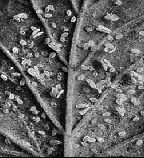 These are moth-like flies that are milky white and covered with a waxy powder. Their eggs are laid on the underneath side of the leaves. The eggs are yellow and will turn to gray as they mature. If you shake a plant that you think has been infested with whiteflies, these tiny moth-like bugs will fly up from underneath the leaves. They look like
These are moth-like flies that are milky white and covered with a waxy powder. Their eggs are laid on the underneath side of the leaves. The eggs are yellow and will turn to gray as they mature. If you shake a plant that you think has been infested with whiteflies, these tiny moth-like bugs will fly up from underneath the leaves. They look like
“flying dandruff”
and multiply very quickly.
General Information:
Whiteflies excrete sticky honeydew that will also damage a healthy plant. These are a real pest in greenhouses or on indoor plants since they like warm, sheltered areas. They are more prevalent in the southern United States. They are not fussy eaters and will damage almost any plant, especially if a plant is deficient in magnesium and phosphorus.